When you look at the Moon, even with a small telescope, you can clearly see that its surface is covered with a huge number of craters. Our planet is much larger than the Moon. So, logically speaking, the Earth should be covered with even more craters than its satellite. But then why can’t we see them?
The answer to this question is quite simple. Unlike the Moon, the Earth is geologically active. Combinations of erosion processes and tectonics lead to the fact that celestial scars “heal” rather quickly (on an astronomical scale) and become invisible to observers. However, in some parts of our planet, geological conditions still allow craters to persist for long periods of time. In this article, we will tell you about five of the most famous impact formations on our planet that are well preserved. Some of them were formed billions of years ago, while others are the same age as humanity.
Vredefort Crater
2 billion years ago, an asteroid with a diameter of at least ten, and most likely all twenty kilometers, fell on the territory where South Africa is now located. The colossal impact resulted in the formation of a 300-kilometer multi-ring crater. The collision had such a strong impact on the surrounding area that billions of years later, its traces can still be seen from space.
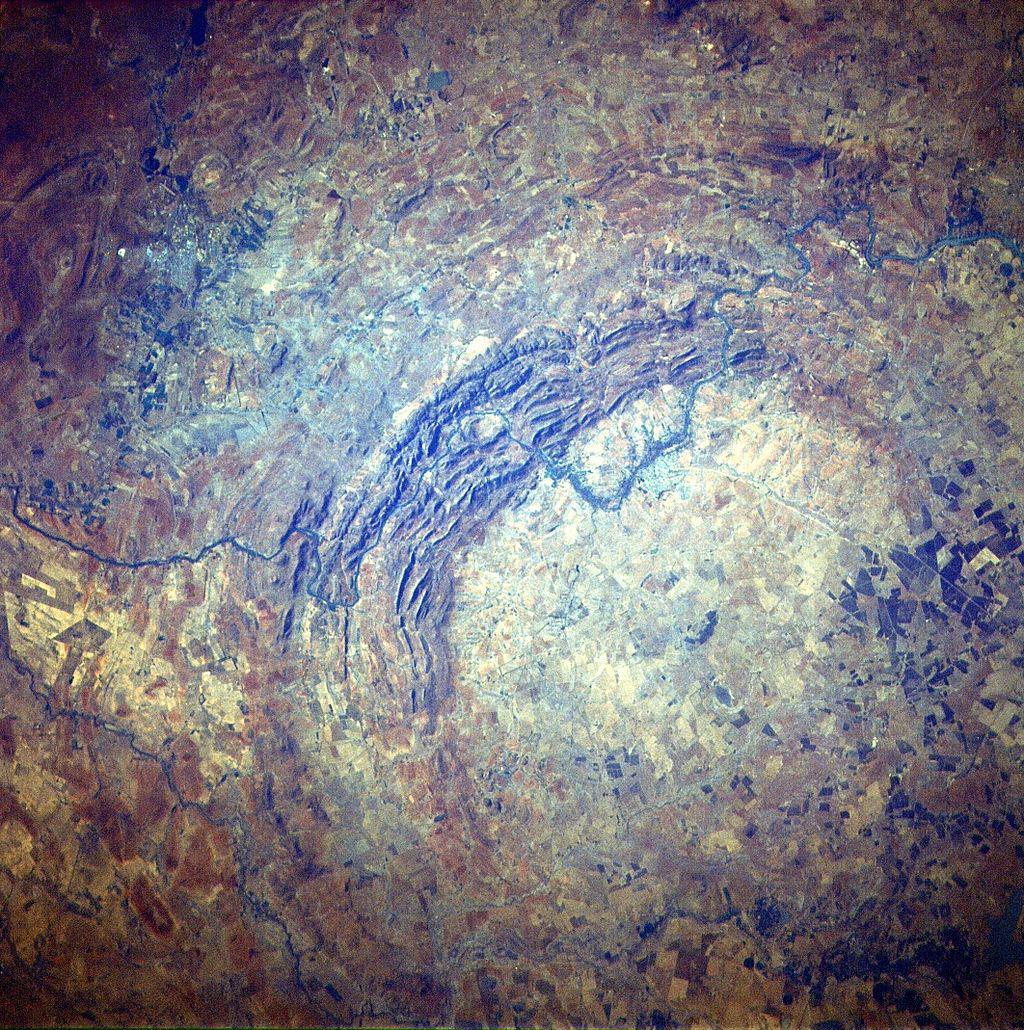
For a better understanding of the size of Vredefort Crater, we note that the characteristic structure on the satellite image above is not its shaft at all. It is the remains of the central dome of the crater. It consists of an incomplete ring of hills with a diameter of 70 km. To this day, Vredefort is the largest confirmed crater on our planet.
Tenoumer Crater
One of the best-preserved craters on Earth is located in the heart of the Sahara Desert. It is known as Tenoumer, but it is often also called the Martian crater. And if you look at the pictures, the reason for this is quite clear. Thanks to the desert landscape, where there is not the slightest hint of greenery or any signs of civilization, it may seem that it is really not on Earth, but on the Red Planet.
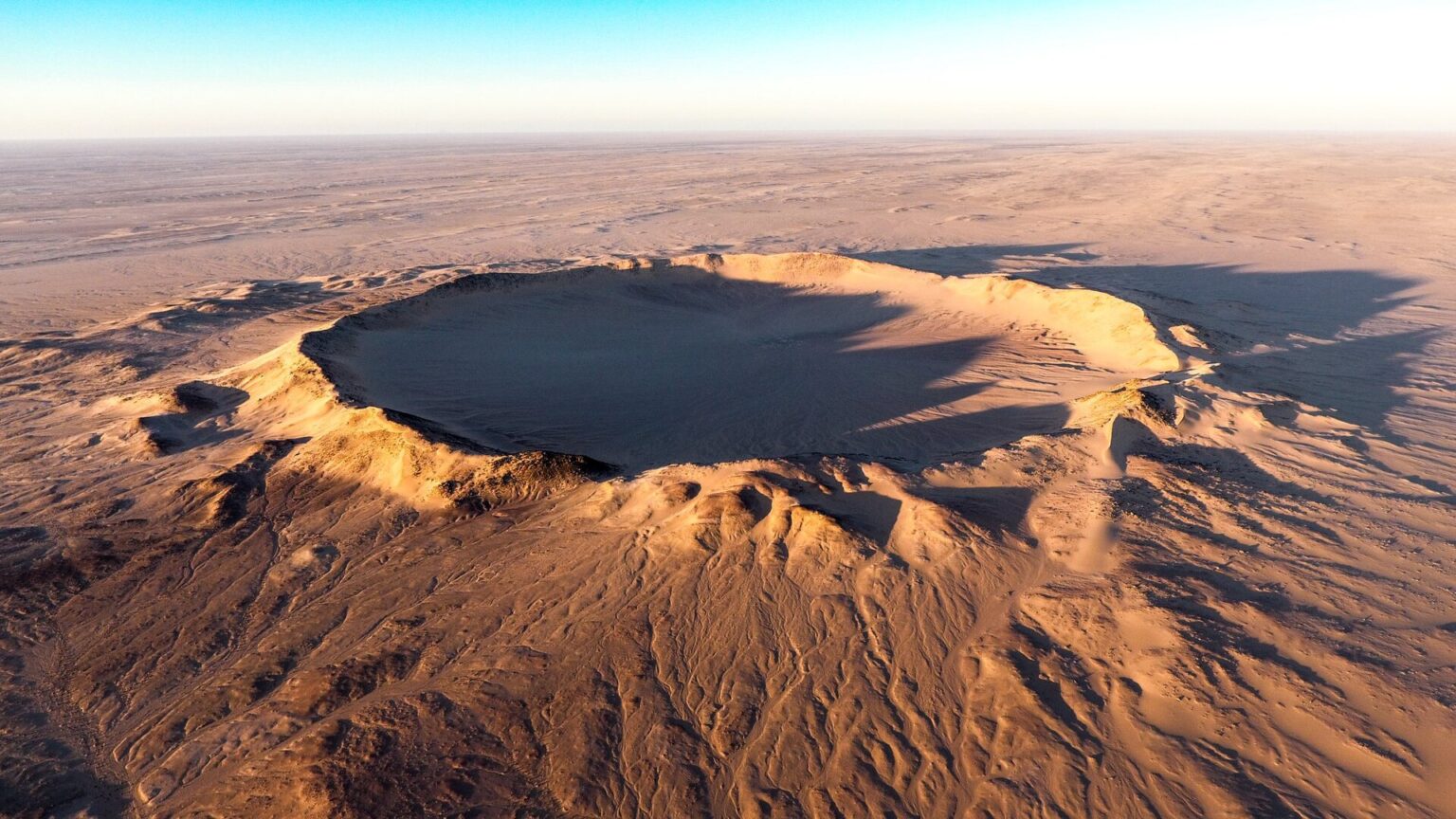
Tenoumer Crater has a diameter of 1.9 km. Despite the fact that the bottom of the crater is covered with sand, its shaft rises 100 meters above the surrounding surface, so it can be easily seen from space. But as for the age of the crater, scientists have no consensus on this issue. According to various estimates, it ranges from 20 thousand to 1.5 million years old.
Manicouagan Crater
It is believed that water is not the best environment to preserve craters. But there is an exception to this rule. We are talking about the Manicouagan Crater, located in the province of Quebec.
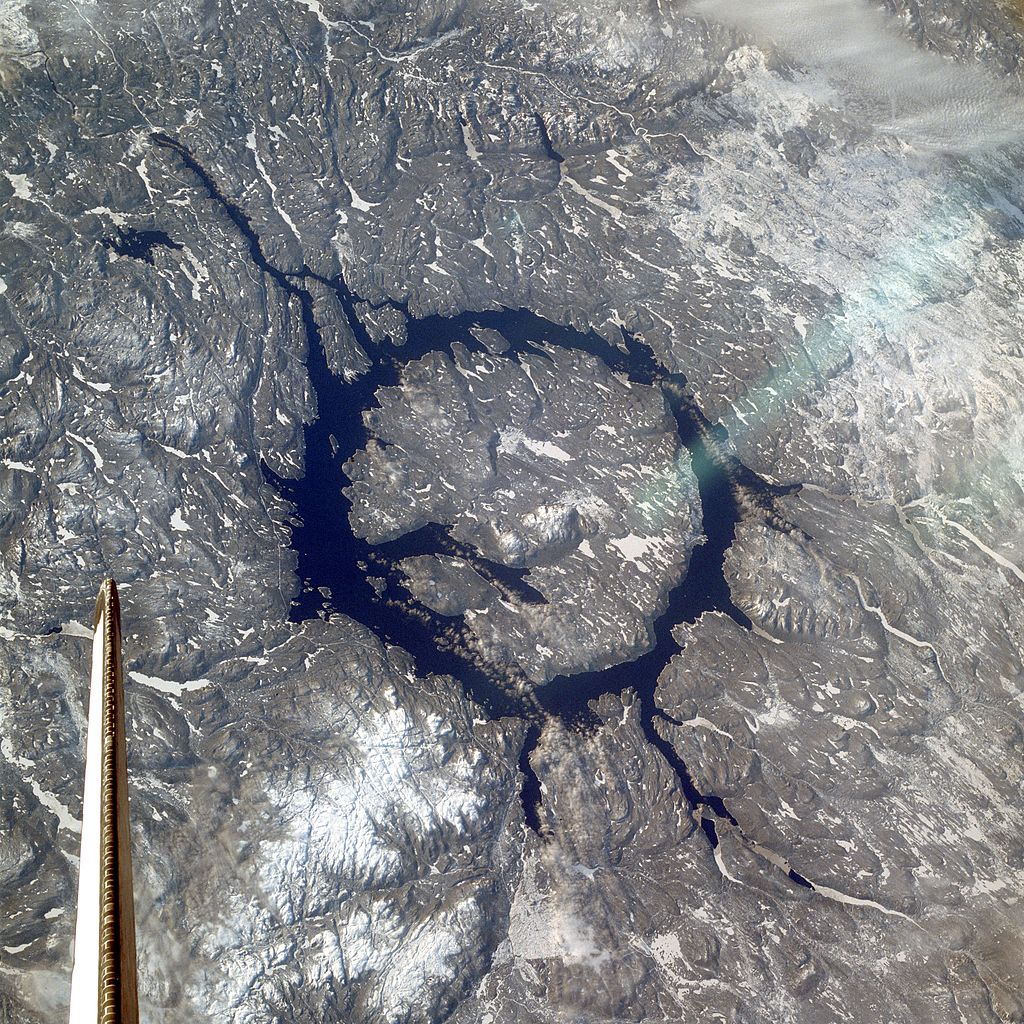
Manicouagan was formed 215 million years ago in the Triassic period, when the Earth collided with an object with a diameter of about 5 km. Despite the fact that the crater formed as a result of the impact was heavily eroded, it is still clearly visible from space. The fact is that water filled the crater, in the center of which, like a castle, is an island. Because of this, Manicouagan Crater is sometimes also called the Eye of Quebec.
Aorounga Crater
Aorounga Crater is located in Africa, on the territory of Chad. The diameter of the impact formation is 12.7 km. Its exact age remains unknown. According to geologists, it was formed no later than 345 million years ago. The crater consists of an outer and an inner ring (11 and 7 kilometers, respectively), which rise about 100 meters above the surrounding plain. In the center is a one and a half kilometer hill, which is most likely the central peak.
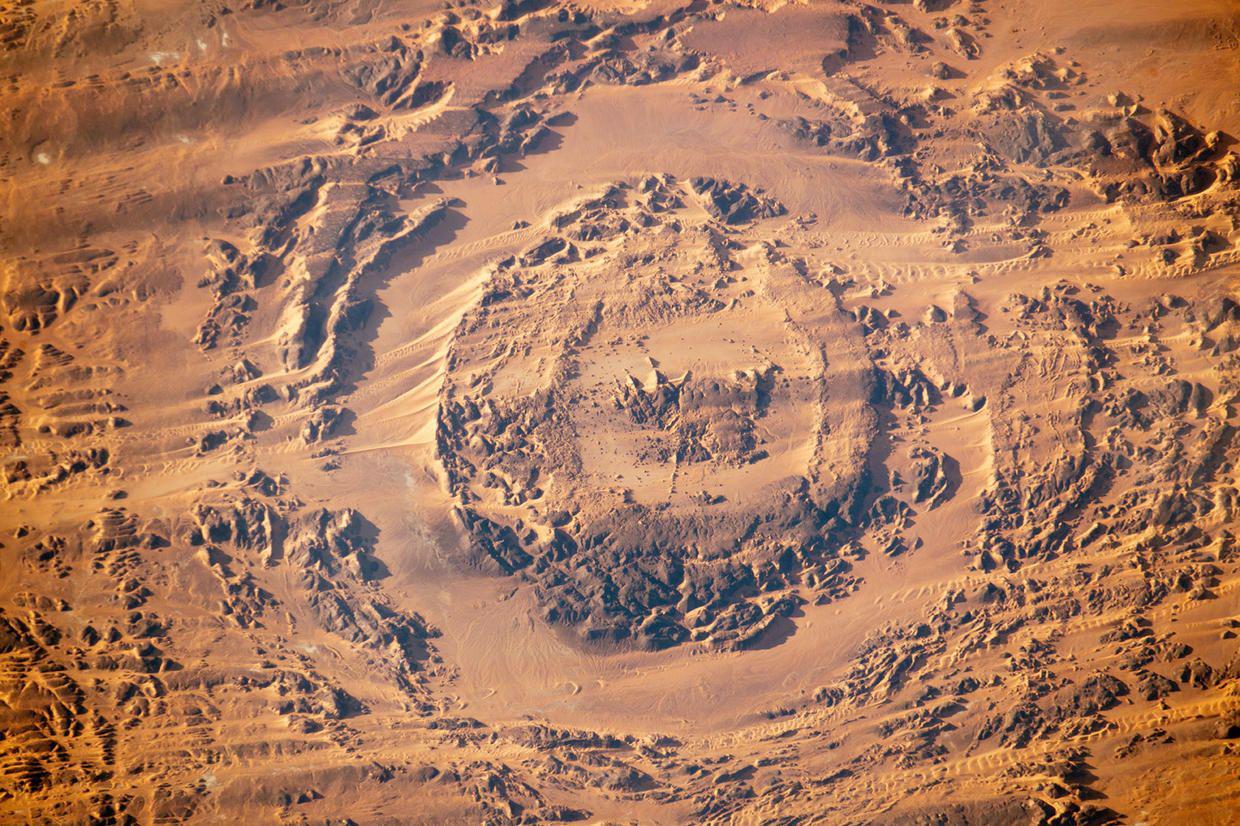
Radar observations from space have revealed two rounded structures covered with sediments located in the vicinity of the crater. According to scientists, they are likely to be of impact origin. The impactor may have broken up into several fragments while entering the Earth’s atmosphere, creating a “crater chain”. According to researchers, the original size of the celestial body that fell to Earth could have been up to 2 km.
Arizona crater
The Arizona Crater, also known as the Barringer Crater, is the most famous impact formation on Earth. This is due to its youth. It is 50 thousand years old, so erosion and tectonic processes have not had time to hide the traces of the impact.
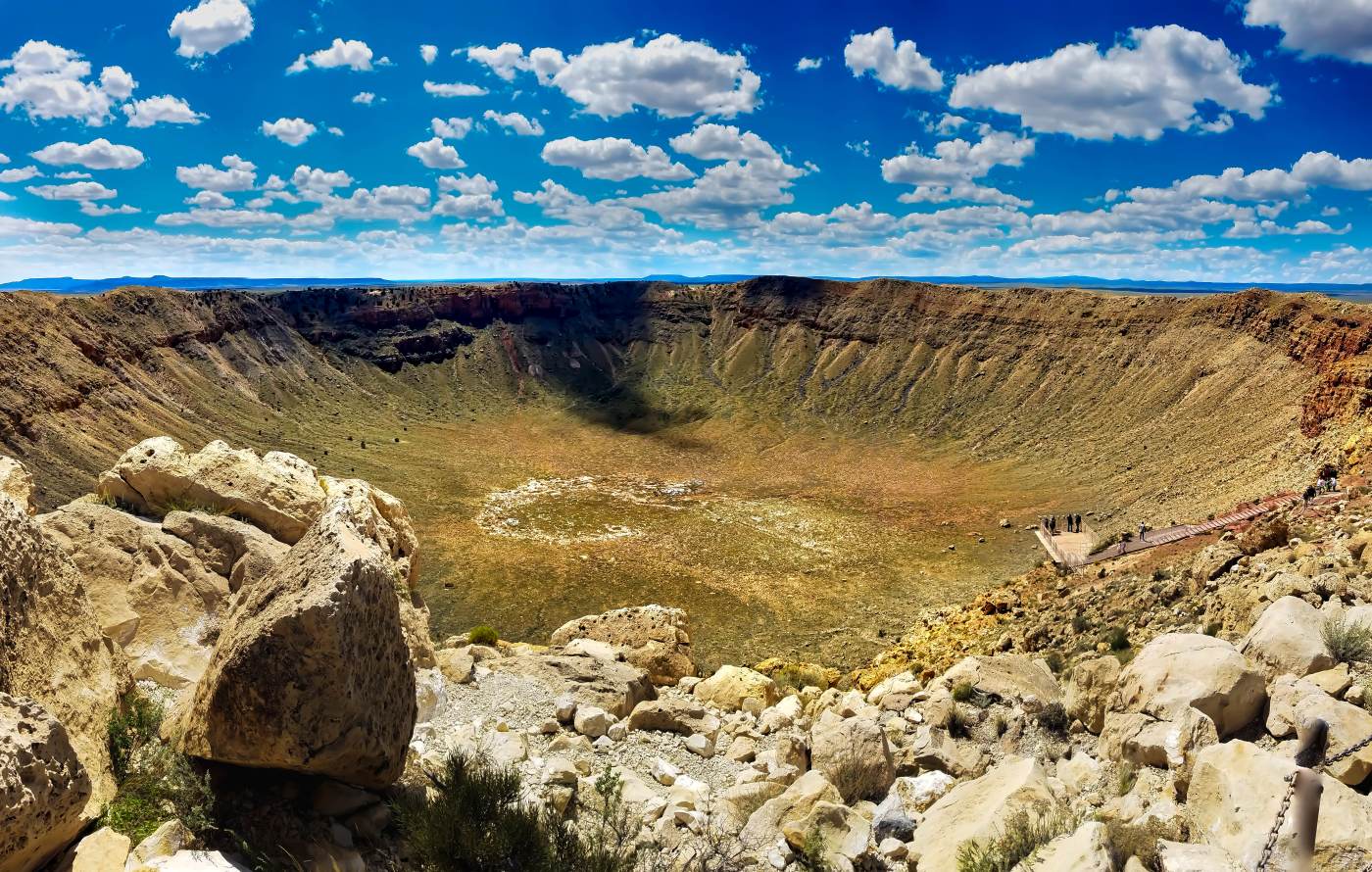
The crater was formed as a result of the fall of an iron-nickel meteorite, the diameter of which is estimated at 30-50 meters. As a result of the strong impact, a bowl-shaped hole over 1200 meters in diameter and 180 meters deep was formed in what was once a flat rocky plain. Scientists estimate that the meteorite’s impact released energy equivalent to the explosion of 150 megatons of TNT.
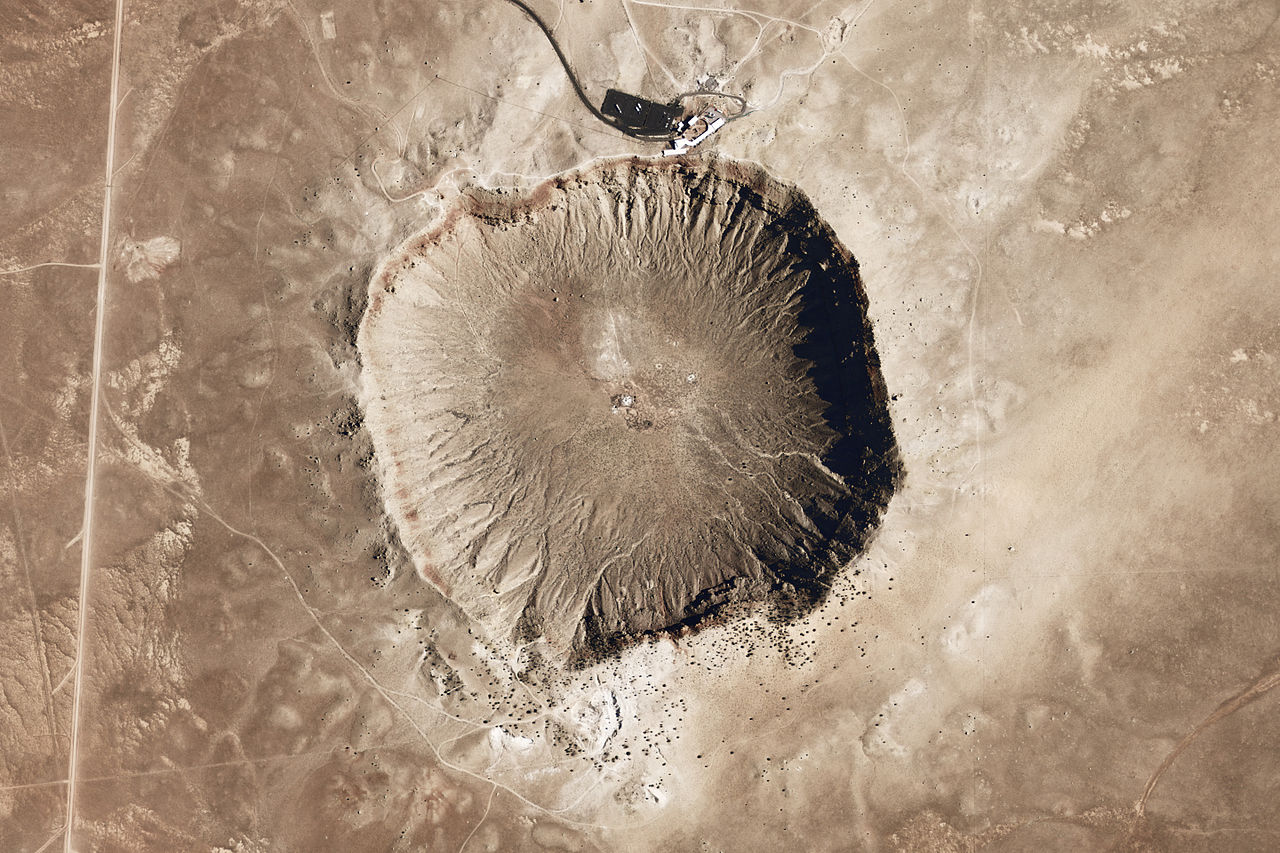
While the Tenoumer crater is often compared to Mars, the Arizona crater is considered one of the places on Earth that most closely resembles the lunar terrain. That’s why in the 1960s it was used to train astronauts preparing for a flight to the Moon. Now it is a popular tourist attraction. About 270 thousand people visit the crater every year.

